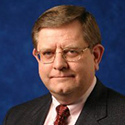By Jeff Brumley
A new study reports that American churches are increasingly less willing to make changes to worship, programs and ministries needed to best reflect and meet the needs of the communities around them.
Oak Grove United Methodist Church in Decatur, Ga., is not one of those churches.
After experiencing the typical slump of urban churches from the 1970s to 1990s, Oak Grove has made a comeback as a contemporary service and small group ministry were added, said Glenn Ethridge, the senior pastor.

The congregation emphasized invitation and discipleship and watched as the membership grew in numbers and generational representation, he said. Their identity also helped propel growth.
“Given our context and who we are as a church, we are trying to create that small-town feel in the city,” Ethridge said.
‘A boost in growth’
But some new evidence suggests that attitude to be increasingly rare among U.S. congregations.
It’s what David A. Roozen of the Hartford Institute for Religion Research found in “American Congregations 2015: Thriving and Surviving,” which was released earlier this month.
The survey presented some positives — including better financial health and that, overall all, more churches are thriving than struggling.
But for how long?
The survey offered a shot across the bow in a number of areas. Spiritual vitality is trending down and young adult ministry is not a high priority for most congregations.
And perhaps most concerning is what it described as a continuing decline in “the embrace of change.”
Congregations open to “adaptive change,” the survey said, “are much more likely to have higher levels of spiritual vitality than those who struggle with change,” the report said.
The importance of change is that it is directly connected to congregational vitality and that, in turn, to growth.
One of the reasons for this is that changes in worship help distinguish a congregation from others in its context, the study said.
“Such differentiation,” the survey found, “provides a notable boost in growth.”
‘Change or die’
Whatever the positives, Leonard Sweet said the unwillingness to embrace change was the most alarming aspect for him.
“I was stunned by this,” said Sweet, a pastor, theologian and best-selling author on issues including community and identity.
“I say COD — change or die,” he said. “You have to be willing to adapt.”

The focus of that adaption should be a congregation’s immediate neighborhood or community. It’s what he referred to as their zip code.
Churches should be “discovering what it means for me as a church and as a pastor to do ministry in my zip code,” he said. “Jesus wept over a city — are you weeping over your zip code?”
Even big business is getting the message, he said, citing the mass customization movement where stores and products are being tailored toward neighborhoods and even individuals.
Importance of originality
But George Bullard sees something positive in the report: proof that the willingness to innovate in worship can be the kick-starter for improvements in a church’s spiritual health and its numeric increase.
“It gives them a way to not be like every other church on the block,” said Bullard, a church consultant and strategic coordinator of the Columbia Partnership in South Carolina.
That’s good news because it shows churches that action in one area can lead to improvement in others — and that’s something he and other congregational coaches and consultants have been telling churches for years.

“We have experience and we sense the trends, but it’s nice when you have scientific research that says you’re right,” Bullard said.
The thread throughout the study is that churches most often focus on the spiritual vitality of their members. That comes down to discipleship and disciple-making ministries.
“One feeds the other,” he said. “Worship innovation leads to spiritual growth” and “discipleship growth will influence and inspire worship.”
‘A fresh look at church’
Ethridge said that process is what inspired the turnaround at Oak Grove.
Beginning in the 2000s, a housing turnover began in the community surrounding the church, with many older residents selling to younger singles and families. Around that time, the congregation launched a contemporary service.
“Prior to that, Oak Grove had done excellent traditional worship and that had been its trademark,” Ethridge said. “And that still is its trademark.”

That’s because many of the young people moving into the area discovered traditional worship — and stuck with it.
But the contemporary service has taken off, too. It avoids the tech-heavy presentation of megachurch worship and follows the liturgical year, which is rooted in Methodist and Wesleyan worship traditions. But the music itself is contemporary, Ethridge said.
Both services are key to the church’s growth and hometown experience because both attract members from a variety of generations, he said.
“We have avoided any competition between those two and see both as vital part of our tradition.”
The small groups have had a direct role in promoting spiritual growth in their participants, he said.
“They offer good ways for people to feed their spirituality.”
The missions focus at Oak Grove helps with that, too, especially by putting multi-generational teams to work helping those in need in the community.
From a numbers perspective, this approach is working for Oak Grove. In 2008, average worship was 698. In 2013 it was 920.
But it isn’t the numbers that matter, Ethridge added. It’s the community they are building.
“Most in our church grew up in church and left the church … and came back,” he said. “Others stayed in church and wanted to have a fresh look at church.”
